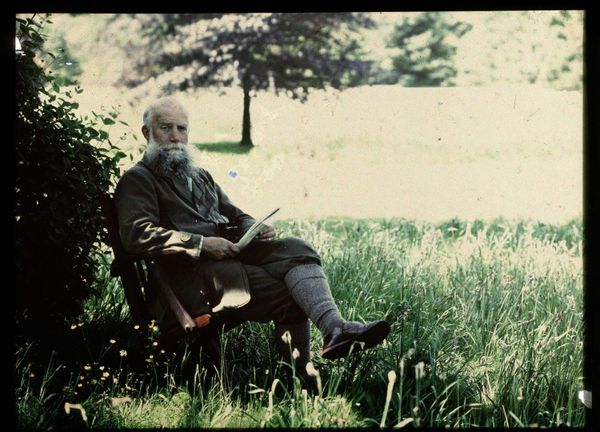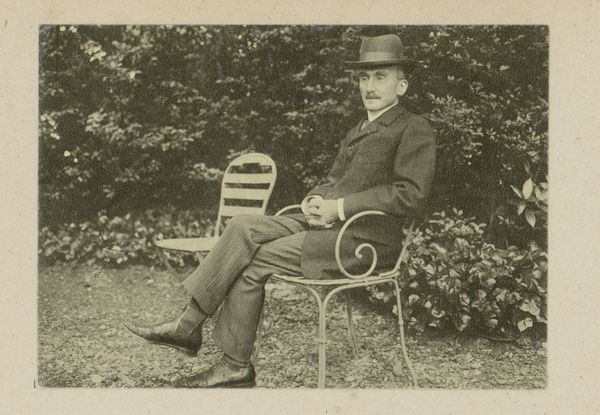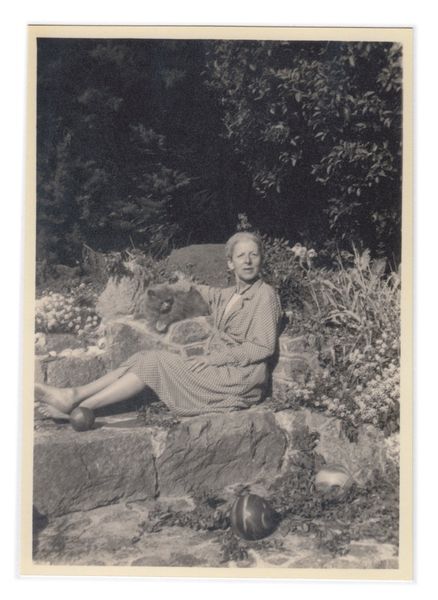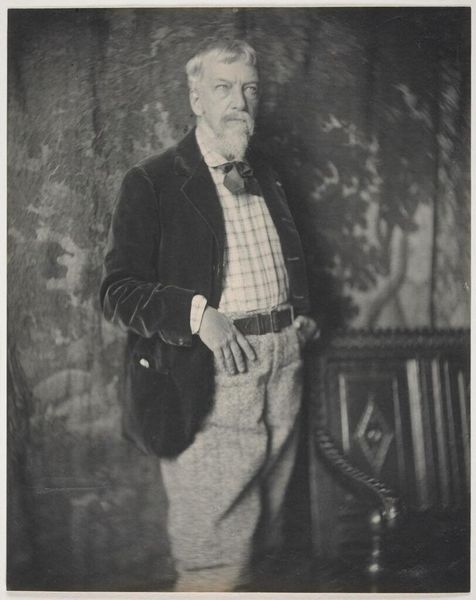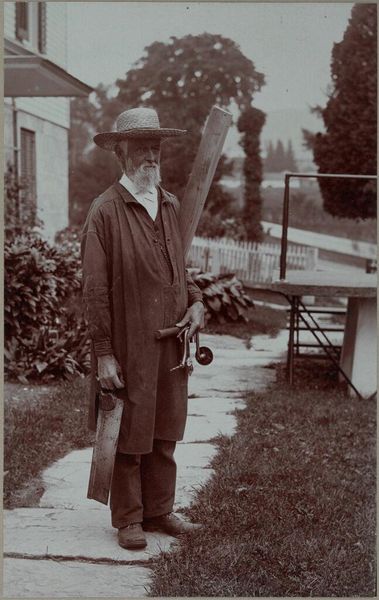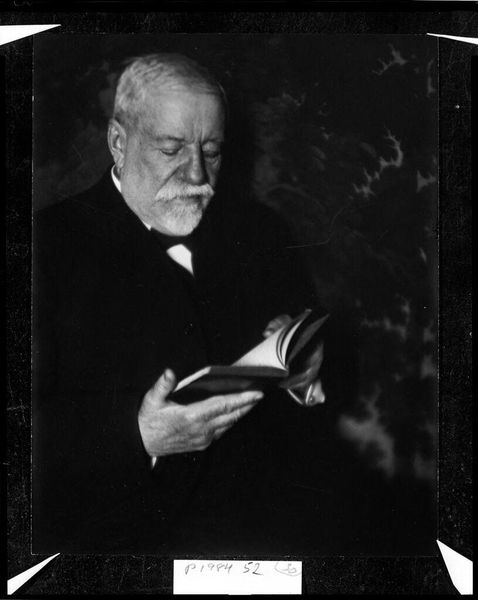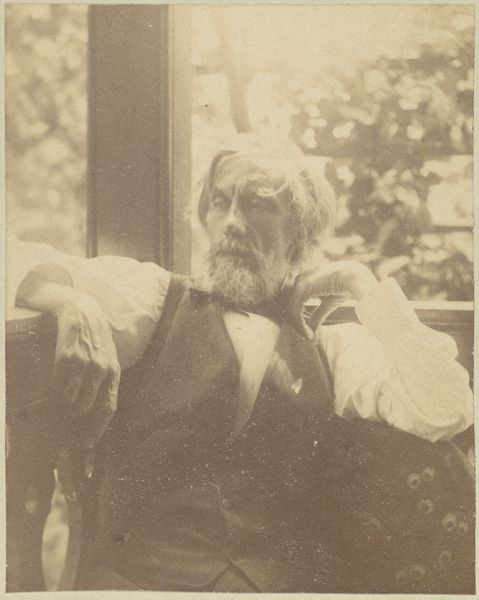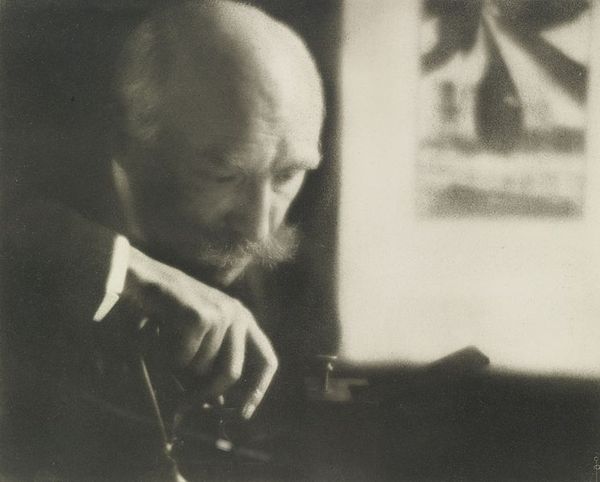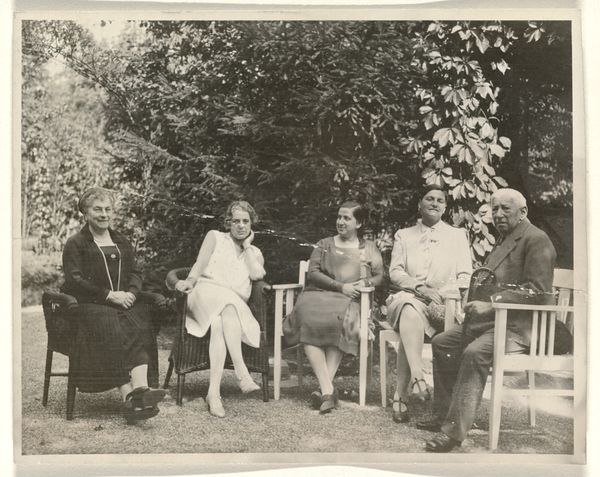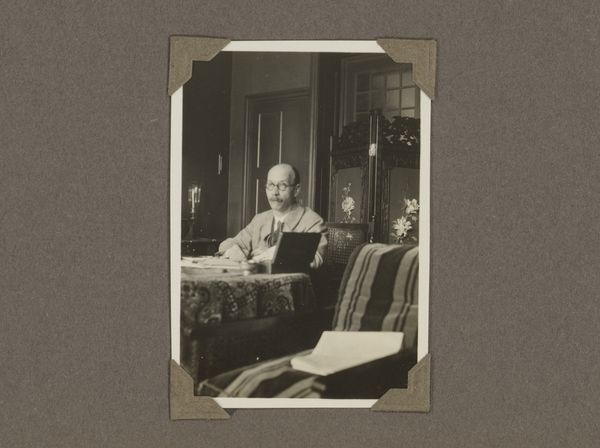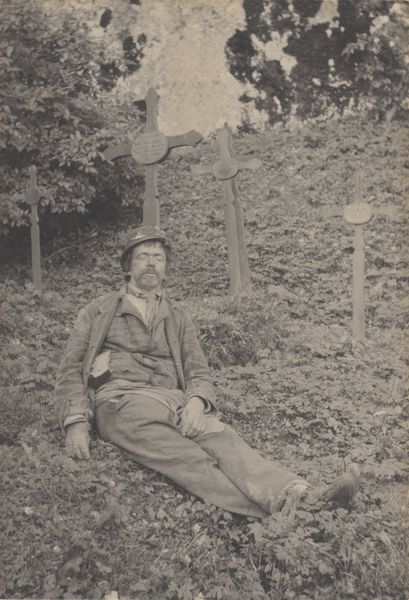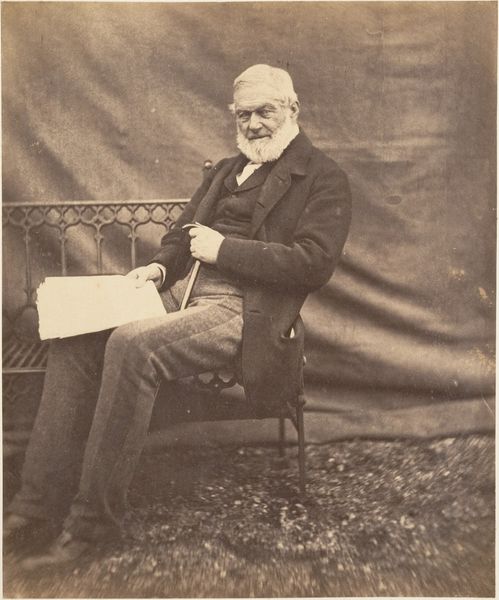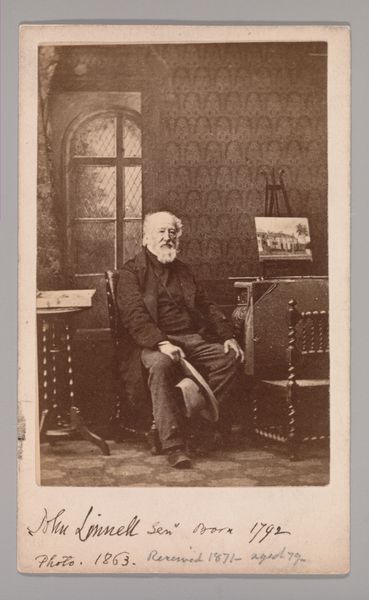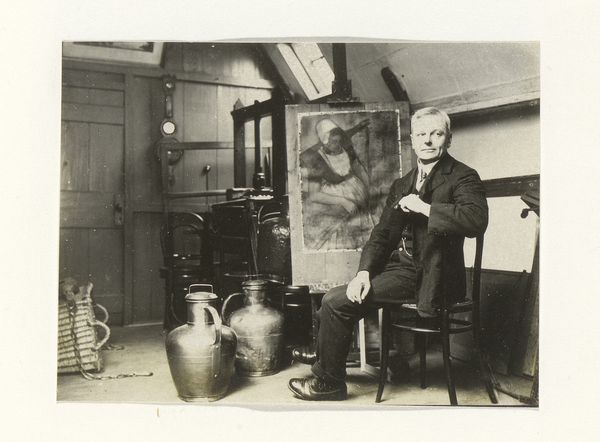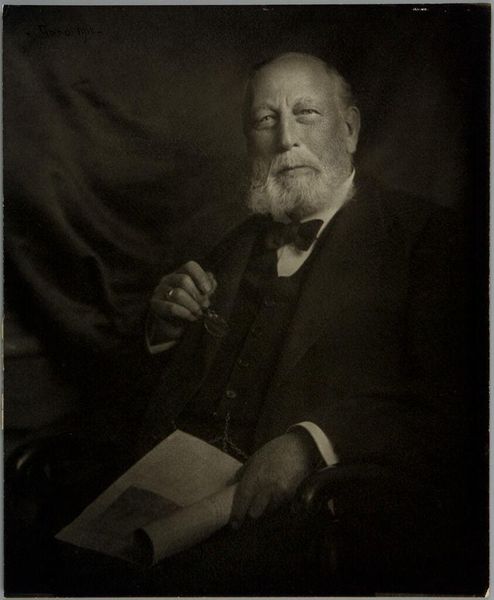
Dimensions: height 89 mm, width 119 mm
Copyright: Rijks Museum: Open Domain
Editor: This is a photograph entitled "Portret van een man, mogelijk Adolphe Burdet," dating from sometime between 1907 and 1930. It gives off a very peaceful, contemplative vibe, doesn't it? What do you see in this image? Curator: Immediately, I'm struck by the composition itself. Notice how the figure, seemingly engrossed in his reading, is framed by nature. The cultivated serenity of the lawn suggests a controlled, perhaps idealized, version of nature. It reflects, perhaps, the sitter’s own attempt to control his narrative. It's as though the photographer aimed to depict not just a portrait but an archetype. Editor: An archetype of what, exactly? Curator: Perhaps the scholar, the man of leisure, deeply entrenched within a rapidly modernizing era. Photography at the time was both democratizing image-making and subtly grappling with the painted portrait's legacy. What symbols do *you* detect? What recurring visual cues emerge for you from that era in general, especially across media? Editor: I suppose his posture. It seems deliberate, meant to convey a sense of composure. And perhaps the fact that he’s reading outdoors, engaging with nature intellectually instead of, say, working it. It seems aspirational in a way, even performative. Curator: Precisely. Consider the gaze then – averted from us, inward-looking. This connects deeply to Romantic ideals but, because this is photography, invites scrutiny about authentic emotional capture. It asks us if an image can contain psychological truth. Does the photo resonate, make you feel, question, or connect differently due to that era? Editor: It certainly makes me think about the intersection of art and psychology in the early 20th century. There’s an intriguing tension between the outward representation and the potential inner life suggested. I didn't expect that. Curator: Yes, it compels us to reconsider cultural expectations about stillness, learning, even class. What’s captured is so often what the symbols and imagery purposefully hide. The garden becomes a space, therefore, less of leisure, but of negotiation.
Comments
No comments
Be the first to comment and join the conversation on the ultimate creative platform.
